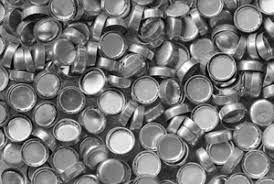YET ANOTHER SHORTAGE
Well, once again a primer shortage is upon us — just like in 2012, 1996, and (the big one) 1941-47.
The above dates are vague. Who knows exactly when a shortage of a component evinces itself? And who knows when it ends? All we know at this point is that Graf’s, for one, did not have a single primer in stock when I checked their website a week ago, and right around that time I got a newsletter from Powder Valley, the retailer of reloading supplies, calling this “the greatest primer shortage in history.”
They overstate, of course. Nothing compares to the war years — roughly 1940-45, with a couple of additional years tagged on the end as factories converted from military production back to civilian. This is why we saw companies like CCI, Hodgdon, Speer, Sierra, Hornady and Nosler spring up between 1948 and 1952. There was brisk demand, scant supply and a golden opportunity for entrepreneurs.
What we have now is not just a primer shortage. Shortfalls are showing up in many types of ammunition, brass and common bullets. The same newsletter quoted the National Shooting Sports Foundation (NSSF) as saying there are 6.2 million new first-time gun owners roaming the streets, although it was vague as to the time period. Since the first of the year? Since the lockdowns began? Since reports of zombies began filtering out of the San Fernando Valley? Didn’t say.

However, these new gun owners now find themselves encountering ammunition shortages for their new darlings, with prices doubling or even tripling when you do find a cache somewhere. For years, for example, demand for .380 ACP was light and sporadic; then came the boom in concealed carry and a spate of new compact .380s.
Ammunition makers did not change their production runs to accommodate the increased demand, and suddenly you can’t find .380 anywhere. What’s more, you can’t get brass, and last time I looked, all but two or three specialty .380 bullets were out of stock at Graf’s, with no backorders and no projected date for new deliveries.
Before the pandemic, I happened to acquire another .380 and thought I should lay in some ammunition, which I duly did. Bought it online because that’s where it was available in bulk at a good price. On October 28, I got a notice that they still had some and were now selling it at $199 for 100 rounds. That’s right, two bucks per cartridge. On the same day, both Graf’s and Midway were completely out of .380 bullets.
Obviously, a good number of the aforementioned 6.2-million new gun owners are turning to handloading. While the rest of the economy struggles, guns, ammunition, loading components and wherewithal are enjoying an unprecedented boom, brought on by fear of civil unrest, fear of new gun control measures or fear of a breakdown in society brought on by plague.
In 1996, I encountered my first primer shortage. No one ever pinned down the reason for that one. I remember, though, that in Canada, dealers were being doled out primers by the hundred, not by the thousand, and were selling them to favored customers five or ten primers at a time, priced per primer. That situation lasted well over a year.
Ever since, I’ve ensured I always have at least a year’s supply on hand. Since I write about handloading, that’s several thousand, not just a few hundred.
One huge difference between now and 1996 is the prevalence of on-line sales and our ability to search the internet for pockets of supply. These may be found a thousand miles away, but a click of the mouse and a credit card number and they’re on their way.
Word is, although I’ve been unable to confirm it, that Federal, the biggest single supplier, is a year behind with a billion-dollar ammunition backlog, which suggests it will probably get worse before it gets better.
The shortage we are in now, which involves a truly rare alignment of the planets — plague, politics, and potential insurrection — may well turn into a drought to rival what happened during the Second World War. If so, by the end, it will be the handloaders who are still shooting, just as it was back then.–Terry Wieland

